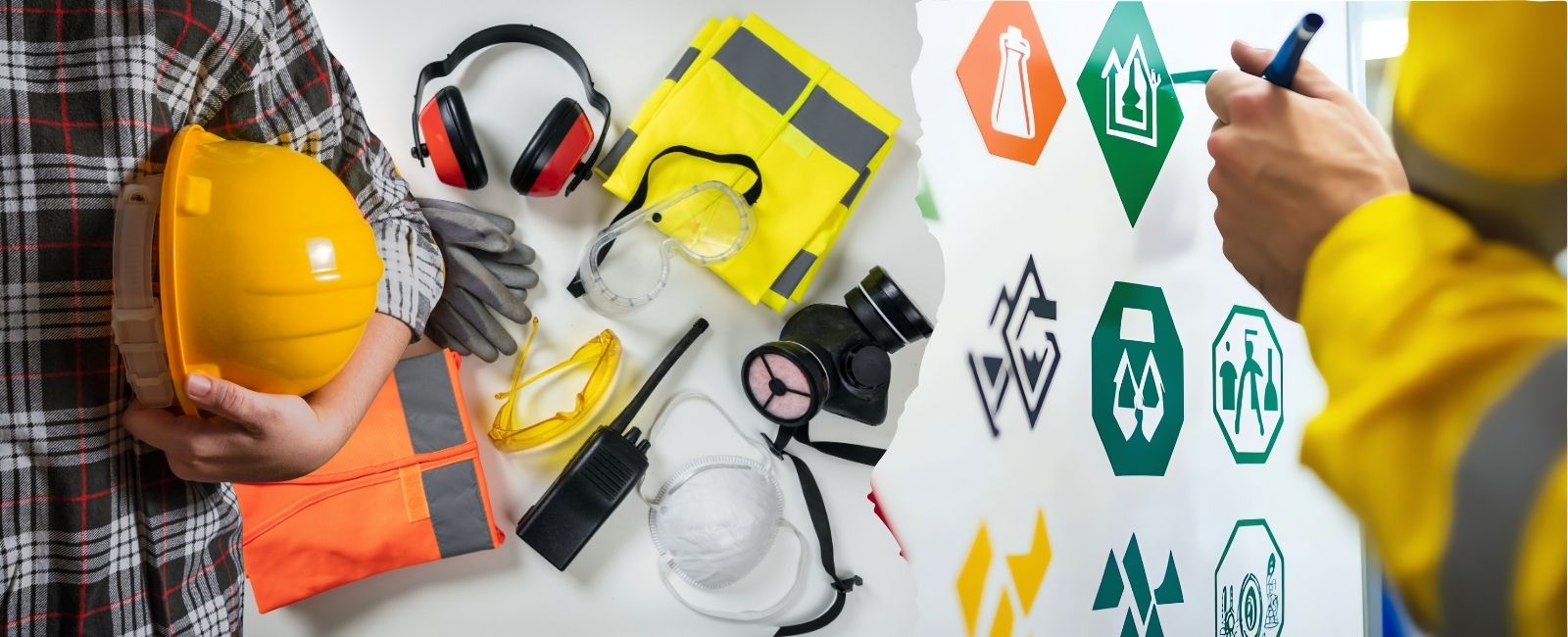Pakistan's billion-dollar opportunity: Can EHS turn safety into big business

In Pakistan’s coalfields, miners descend daily into shafts with little more than a helmet and prayers. In Karachi, sanitation workers still climb into manholes with no protective gear, some never making it out alive. These tragedies rarely make headlines for more than a day, yet across the world, worker safety has become a multi-billion-dollar industry — powered by artificial intelligence, wearable devices, and international compliance regimes. As the global Environmental, Health and Safety (EHS) market races towards $96 billion by 2033, Pakistan remains stuck in reactive firefighting, risking both lives and a lucrative economic opportunity.
Today, the global EHS market is estimated at $52.26 billion (2024) and is projected to reach $95.71 billion by 2033, with a compound annual growth rate (CAGR) of 7.0%. In many forecasts, Asia-Pacific emerges as the fastest-growing region.
The software side — digital tools, compliance dashboards, real-time monitoring — is among the strongest growth vectors, with projections of double-digit CAGR in many segments.
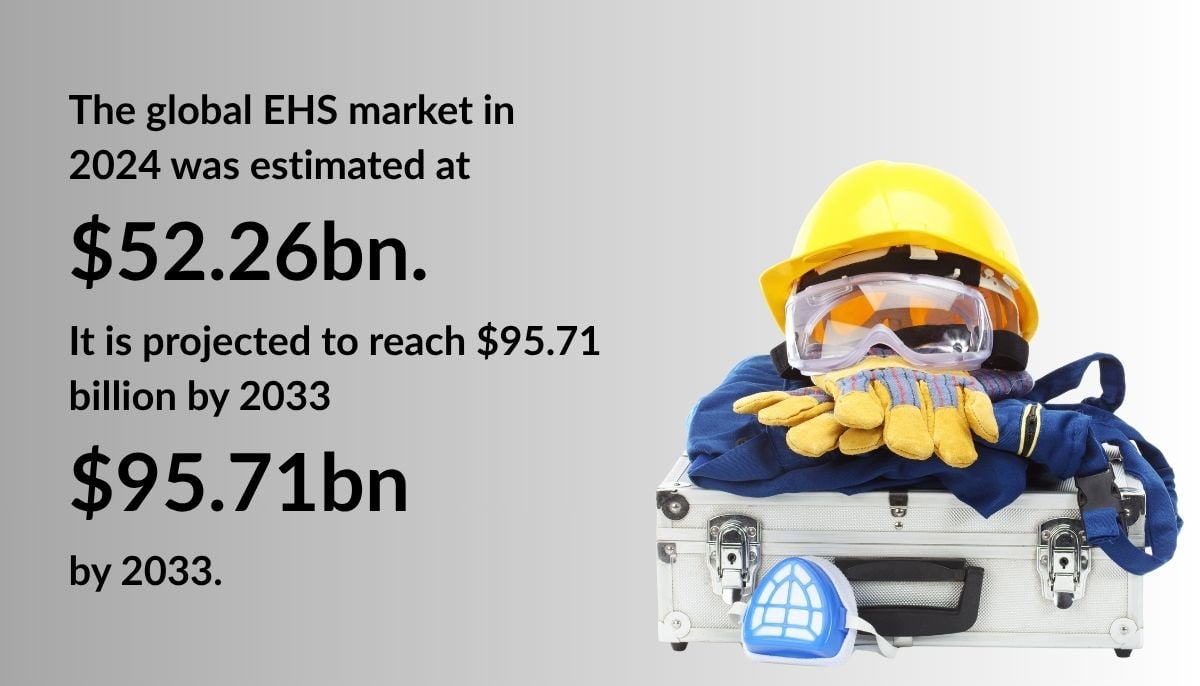
Put differently: what was once a niche operational necessity is now a strategic, tech-infused export opportunity.
Yet in Pakistan, EHS remains largely an afterthought. Safety is reactive. Compliance is patchy. And the idea that Pakistan might one day export EHS services and technologies still sounds futuristic.
At the bottom of the safety ladder
For Naeem Sadiq, an occupational health & safety professional and social activist, the reality is stark.
"OHS is considered a low-priority subject in Pakistan. Perhaps it reflects the little respect, care, and importance that we give to our hugely underpaid and exploited workforce."
He points out that while Punjab and Sindh have OHS legislation, enforcement is toothless: "It is executed by eight to 10 OHS inspectors in each province, whose knowledge goes a little beyond fire extinguishers and sand buckets. If at all they visit a factory, they have no equipment to test or measure the OHS parameters. I could safely say that just about 1% industrial units follow the international safety standards."
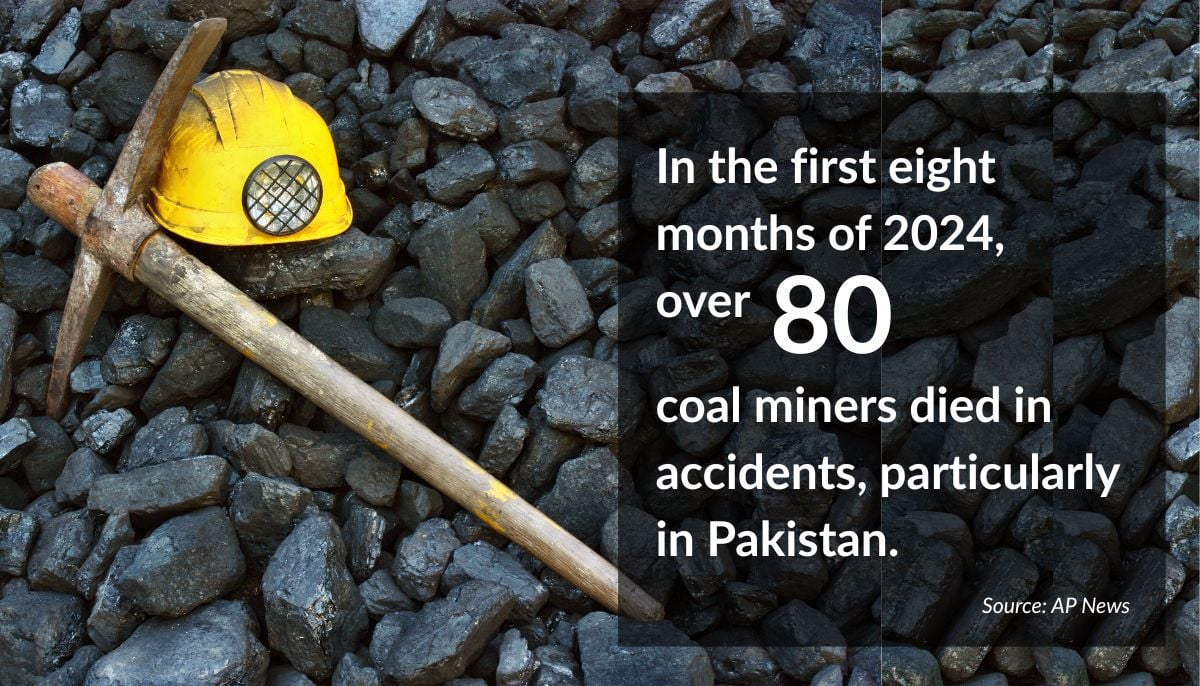
In other words, most Pakistani factories remain worlds apart from global best practices.
The consequences are deadly. According to a 2024 AP News report, over 80 coal miners died in accidents, in the first eight months of 2024, particularly in Pakistan. Sanitation workers continue to die in sewers, coal miners labour under “prehistoric” safety conditions, and factories too often ignore basic risk assessments.
"So essentially, we live in a society that is not even on the first rung of the OHS ladder. And there is no shortcut to glory," said Sadiq.
The price of neglect
The human cost is undeniable. But poor safety also carries a steep economic cost: lost productivity, higher insurance and healthcare expenses, reputational damage, and investor hesitation.
According to the International Labour Organisation (ILO), Pakistan reports about 1,136 occupational injuries per 100,000 workers annually, though many go unrecorded. With a labor force of 85 million (Statista, 2025), the aggregate losses are staggering. Pakistan’s labour productivity, at just $2.24 per worker, lags behind India ($8.49) and Bangladesh ($4.32) (Statista, 2025). Unsafe workplaces are a direct drag on competitiveness.
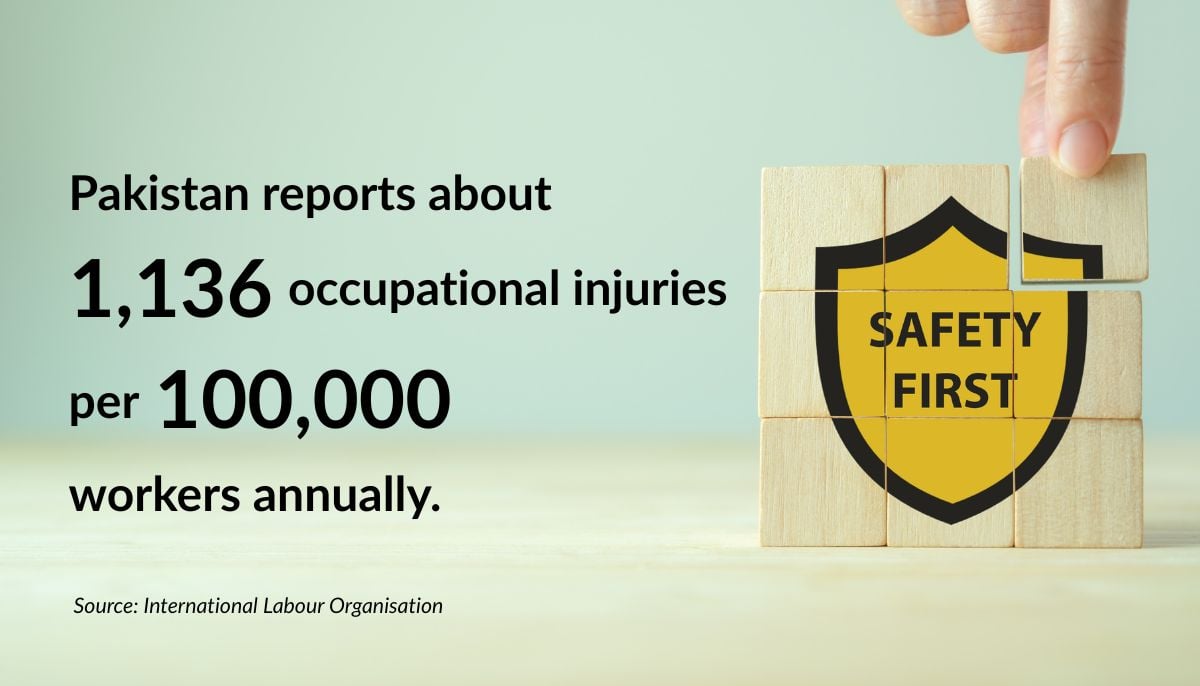
And investors notice. In global supply chains, brands increasingly demand verified safety standards. After the 2012 factory fires in Karachi and Lahore, which killed nearly 289 workers in one facility alone, Pakistan’s manufacturing reputation suffered globally.
In contrast, Bangladesh rebuilt credibility after Rana Plaza by signing a binding international Accord with brands and labour groups. Pakistan has since adopted its own Pakistan Accord in textiles, covering 484 factories and more than 539,000 workers (Vogue Business, 2023). But the model remains sector-specific, not systemic.
Global momentum: the EHS boom
Faisal Majeed, a global EHS strategist with two decades of multinational experience, frames it differently: safety is no longer just compliance; it is commerce.
"Historically, EHS programmes ran on manual inspections, clipboards, and spreadsheets. Over the last two decades, the industry has gradually but increasingly embraced mobile technologies, digital applications, and advanced image-processing capabilities."
He notes how digitisation, IoT, and AI have turned EHS into a strategic enabler:"One clear example is the evolution of CCTV from a reactive review tool into a proactive, AI-driven safety system. Today’s computer-vision platforms analyse live video feeds to spot unsafe acts and hazardous conditions in real time… By automatically issuing alerts and delivering data-driven insights, these solutions help organisations prevent serious injuries, accelerate corrective actions, and strengthen overall safety compliance."
In other words, safety is no longer a cost centre — it’s a growth sector.
Why Pakistan is falling behind
Compared to other emerging economies, Pakistan is playing catch-up."Pakistan’s EHS landscape remains at an early, largely reactive stage compared to peers such as India, Brazil, and South Africa; while those markets have woven safety and environmental management into strategic business planning, government and industries in Pakistan still treat EHS primarily as a compliance checkbox," Majeed observes.
The result is a drain of talent. "We possess strong engineering and safety talent, yet much of that expertise only flourishes abroad in multinational settings. Skilled EHS professionals in Pakistan routinely emigrate for roles that recognise and reward their expertise."
That brain drain is an economic opportunity lost.
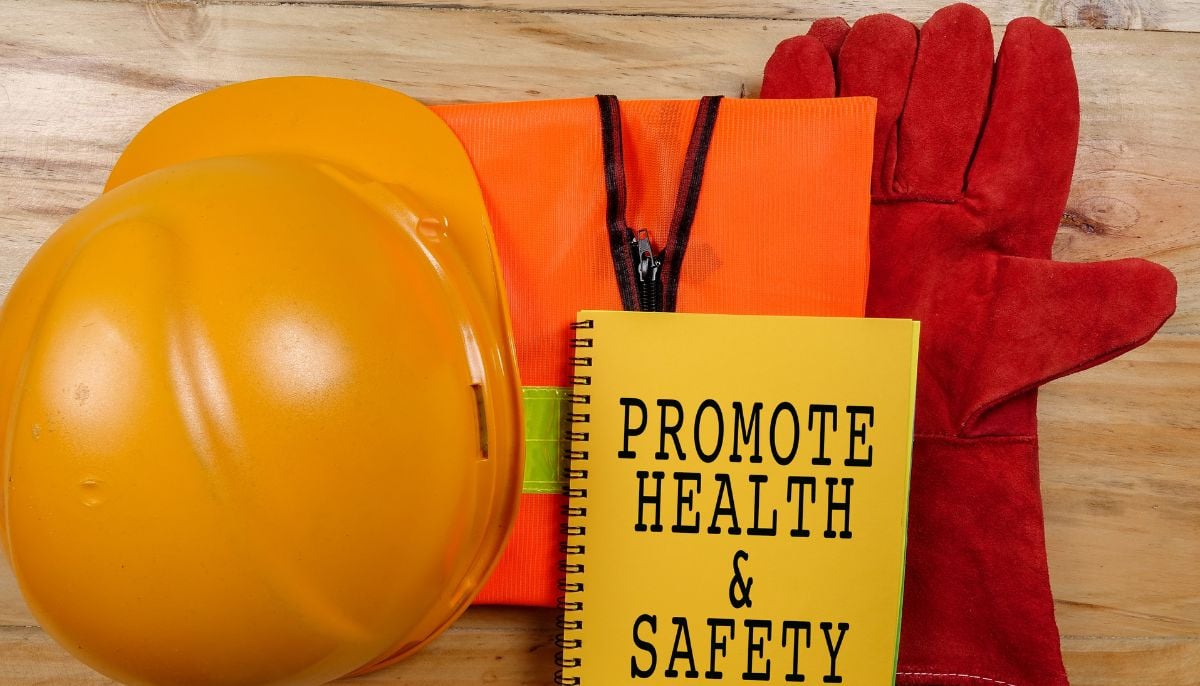
How Pakistan can catch up
So what would it take for Pakistan to carve out a share of the booming EHS market? Majeed outlines a three-step roadmap:
1. Embed EHS into higher education and professional training. “Partner engineering universities and business schools to launch dedicated EHS degree tracks and certificate programs… Establish internship pipelines tying student teams to local industries for hands-on EHS project work.”
2. Seed an EHS innovation and startup ecosystem. He states that creating an ‘EHS Innovation Fund’ that offers grants, tax credits, or matched financing to software houses and industrial R&D groups building digital safety, risk analytics, and compliance solutions would help.
3. Establish a National EHS Standards & Accreditation Authority. "Form a quasi-governmental EHS council charged with defining competency frameworks, accrediting training providers, and aligning national regulations with international benchmarks."
These steps, Majeed argues, could transform Pakistan from a passive adopter into a competitive EHS hub.
Technology as a differentiator
Pakistan’s IT and software talent can help leapfrog traditional barriers."By integrating AI-driven IoT sensors, wearables, and VR platforms, Pakistani companies can detect and predict safety risks in real time, deliver immersive training, monitor worker health continuously, and consolidate insights into unified dashboards for transparent reporting to international clients," says Majeed.
With its strong base of software engineers and textile know-how, Pakistan could specialise in smart PPE, low-bandwidth VR training modules, and process safety frameworks for textiles and agriculture — niches Majeed identifies as global opportunities.
Aligning policy with profit
But none of this can happen without regulatory reform."To accelerate Pakistan’s safety maturity, I would recommend establishing a federal OSHA authority empowered to set and enforce national EHS standards… enforcing EHS compliance on public-sector projects to raise benchmarks… and offering tax incentives to drive adoption of modern technologies," Majeed notes.
Public–private partnerships could amplify impact: joint training academies, co-funded pilot projects, shared incident-reporting systems, and EHS centres of excellence.
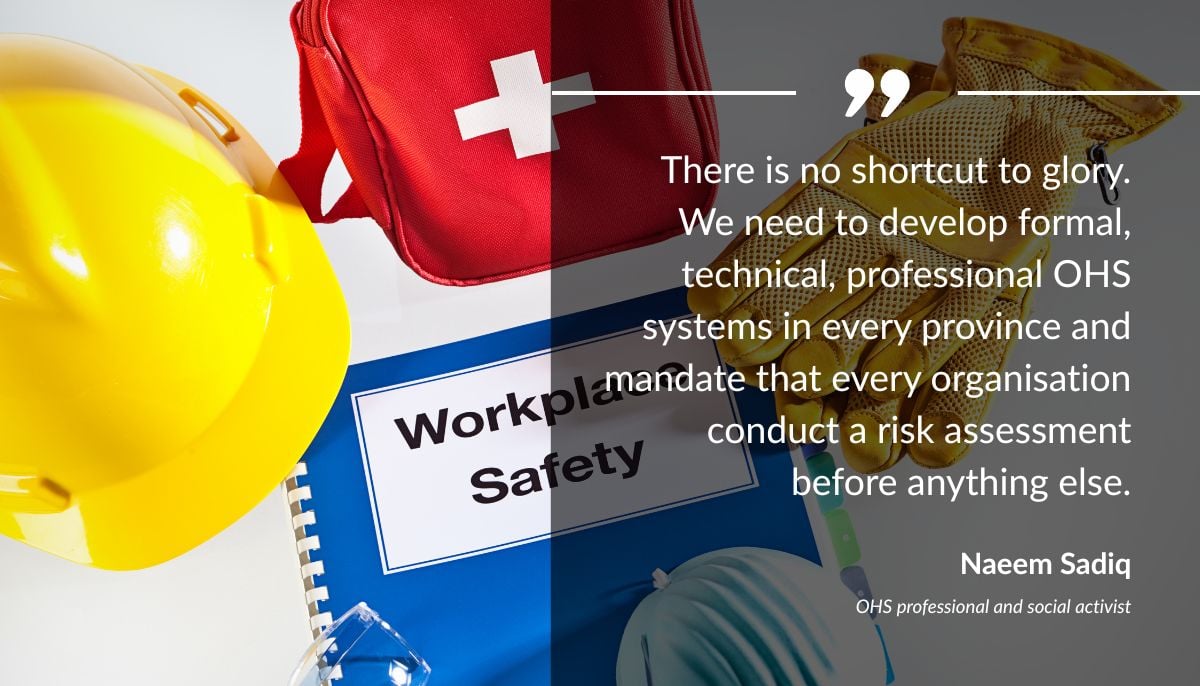
The missed billions — and the way forward
The numbers are hard to ignore. The global EHS market will add over $40 billion in value by 2033. Even a 0.5% share would be worth nearly $500 million for Pakistan.
The business case is clear:
- Safer workplaces reduce downtime and healthcare costs.
- Certified compliance attracts foreign buyers and investors.
- Exporting EHS expertise diversifies Pakistan’s services sector.
- Innovation in safety tech could position Pakistan as a regional hub.
But the costs of inaction are equally stark: continuing fatalities, investor flight, missed exports, and a cycle of under-productivity.
As Sadiq reminds us: "There is no shortcut to glory. We need to develop formal, technical, professional OHS systems in every province and mandate that every organisation conduct a risk assessment before anything else… Only then should a worker or, for that matter, an inspector enter a factory."
Pakistan stands at a crossroads. Safety can remain a moral afterthought, or it can be reframed as a strategic export industry. The global market is waiting.
Afreen Mirza is a staffer at Geo.tv. She tweets @afreenmirza97
Header and thumbnail image by Geo.tv



